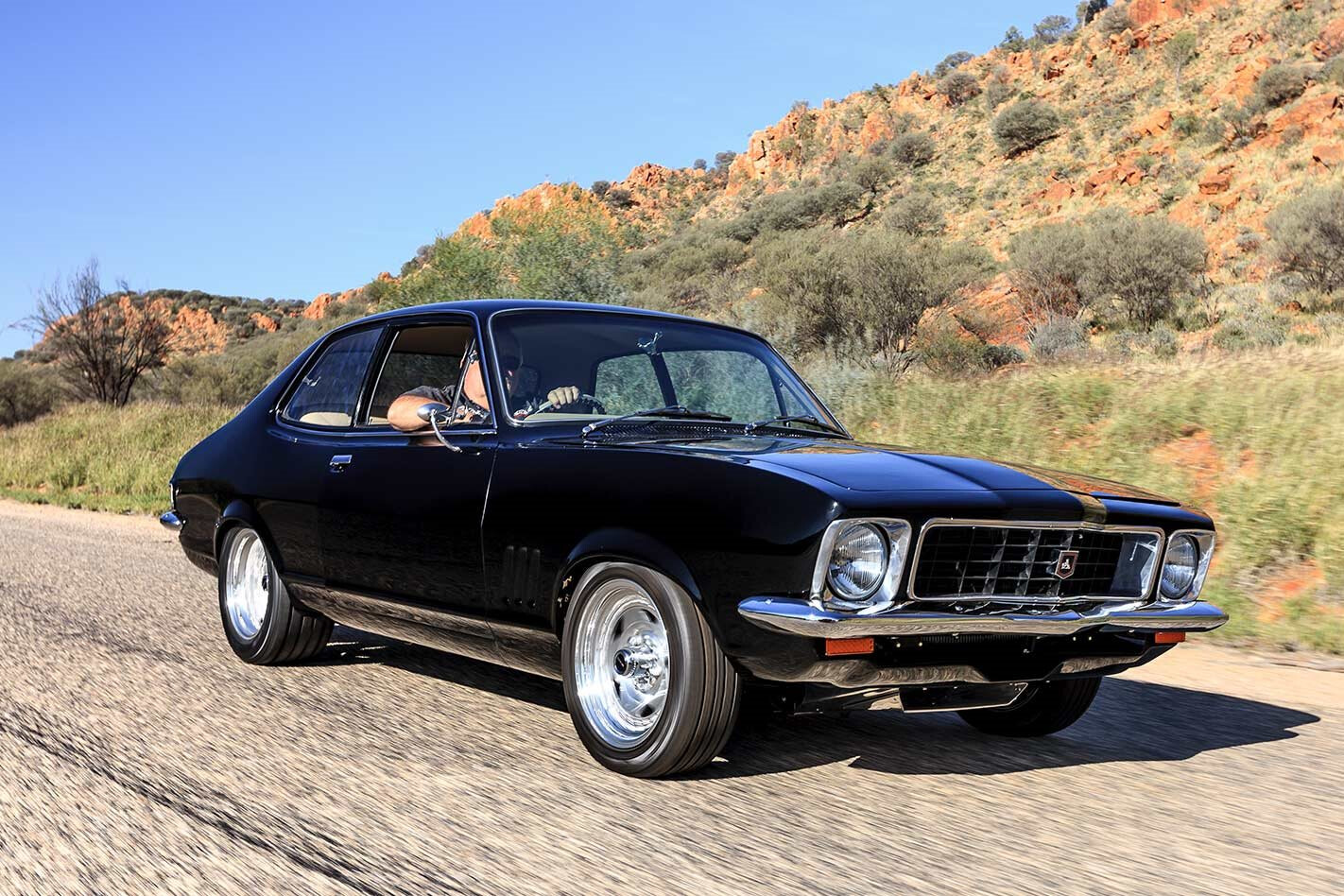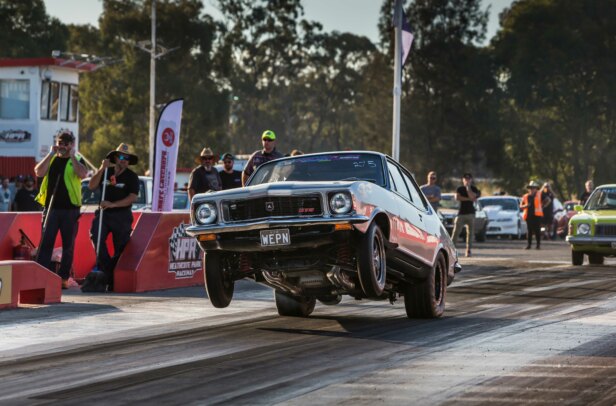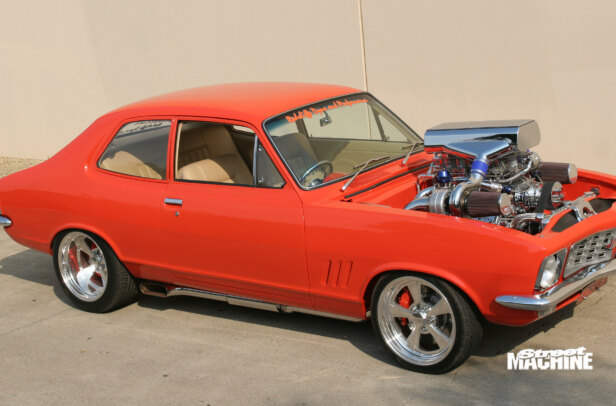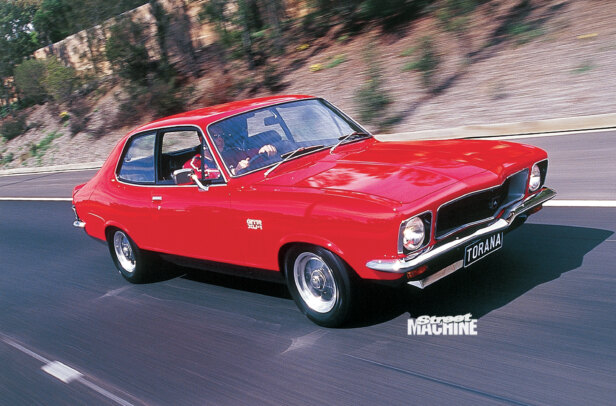This article on Rick’s Torana was originally published in the December 2018 issue of Street Machine
IT’S THE phone call some of us have received, and all of us dread: “Mate, why don’t you take it straight to the tip!” That’s what Peter Hondow told Rick Postrak after a media-blast revealed a holy history of rust in Rick’s LJ Torana. During our photoshoot, Rick and Pete showed us a scrapbook of ‘before’ pics, and the extent of the rust – and the prior bodges to ‘fix’ it – was astonishing. Real spaghetti-strainer, teabag and Swiss cheese stuff. It’s probably more astonishing that the lads got this Torana back on the road again, let alone as this trophyworthy toughie!
“There were a lot of times when I thought about pulling out of the build,” says Rick, who bought the car nearly eight years ago. “The bad condition meant it was going to take longer to do. Of course there’s money; was it gonna be worth it? Maybe not, but these cars are getting scarce.”
“I suggested he go down south and get another one,” Pete recalls. “But Rick said: ‘That’s the one we’ve got, so that’s the one we’re building!’”
Another twist in the tale is where the build took place: outback Northern Territory. Rick, a landscaper/nursery-man, lives in Tennant Creek, and Peter – who did much of the work on the Torry under his Custom Automotive banner – lives and works in Alice Springs. Not only are both towns a fair way from each other, they’re a long way from the convenience of local shops, suppliers and suburban wrecking yards many of us take for granted when screwing together a project car.
“I think I spent 400 hours just on the body,” Peter says. “The car had big flares on it and there was about an inch of bog; it needed lots of dolly work all over it. To get the guards back to the original shape wasn’t really viable – we had to weld in other sections.
“The doors were buggered,” he continues. “Rick bought a door out of Sydney that had been reskinned, but it was a new skin on a stuffed frame, so we took the skin off that one and put it on another. Front guards – you can buy reproductions now, but when we started building this there wasn’t much available. We made all the rear floors, we had to do extensive work on the front guards, the rear quarters – it was all remade to about halfway up the windscreen pillars!”
There was one shining light: “There was a new rear apron on the car when we began,” Pete says. “So that’s obviously something that was available [as a replacement] and we didn’t need to make that from scratch!”
Sourcing parts was a problem, and isolation means expense. “Freight is such a big cost,” Rick says. “Sometimes you’ll be sent the wrong part and sometimes it’s simply not worth sending back for a refund due to the freight costs.” Ouch!
To add to the melee was the fact that owner Rick, like many of us, changed his ideas part-way through the build.
“It was never going to be this good,” Pete says. “It was simply going to be a tidy old-school streeter. Eventually – and after I’d started painting the car – Rick said he wanted to build something ‘showy’!”
The bay has been smoothed and the major surfaces – such as the inner skirt where the battery was originally located – were levelled. The radiator is a PWR shuffled forward to allow space for the cogged-belt accessory drive and the twin fans. CAE extractors run to a split 2.5in exhaust system
Rick’s new plan included larger rear wheels – and tubs – and a lot more detail on the underside and in the interior, plus a colour change from the planned red to Jet Black, laid on by Pete using PPG gear. “Yeah, we went over plenty of the same ground,” says Pete with a laugh. “It’s always good to have a plan – and stick to it!”
The donk is a 3.3L six wearing a blue/black-spec 12-port head fed from three gorgeous twin-throat 45mm Webers on a polished Redline manifold. With a balanced crank, Starfire rods, flat-top pistons, ported head and an all-Crow valvetrain, it should boogie good when Rick begins cruising it
Although V8-transplant Toranas are popular, Rick stuck to a hottie six, with sidedraught Webers as a nod to the Torana’s Bathurst-winning heritage. The engine is a triple-carb 3.3-litre six packed full of good bits. Rick organised it and Peter made it fit.
“I had to take an inch out of the firewall to fit that rocker cover,” says Pete. “And the Gilmer drive meant we had to move the radiator forward and make up different bracketry, plus machine 15mm from the face of the cogs. In some ways, it’s more difficult doing all this with a six than a V8, as the six is longer. It was a bit of a headache making it all look pretty. But hey – it’s all in there!”
Pete made all the polished details for the door trims. Under the leather, the front seats are modified originals but the rear seat was a challenge: Pete made the re-contoured frame by hogging down an HT Holden frame. It took a couple of goes to get it right before the stitching was laid on
The trans is a Trimatic. Not known for its performance heritage, this one ticks the box by being manualised and toughened for use behind the lusty six. The axle is a narrowed nine-inch with 3.5:1 gears.
For now, the wheels are Center Line Convo Pros with 185/60 and 245/50 tyres, those rears creating a bit of a headache due to the unusual size. Rick paid a grand for them and the lads haven’t seen the same size since. Expect a new set of wheels and a more common rubber size for next time. Brakes are HQ Holden-spec front and rear, with the old hot rodders’ trick of Leyland front rotors, which narrows the track a little for tyre clearance.
“We wanted to keep the Torana appearance but update things a bit,” says Pete. The dash is in fact hand-fabbed, and the standard switch-panel has been consigned to history. The wheel and relocated adjustable column are both Billet Specialities items, while the clocks are Auto Meters
The interior, too, has plenty of tricks and tweaks in it, such as the alloy highlights, after Rick, Peter and the trimmer – local lad Hamish McGauchie of Spectrim – collaborated on a theme based around modified Torana front buckets and bucket-style rear seats. The dash is totally scratch-built, as is the rear seat frame.
For now, Rick’s Torana is enjoying a salubrious, relaxing life of not actually being driven. He particularly enjoyed showing it at Red CentreNATS in Alice Springs (only 500km down the road!) and plans a trek south to show it at Summernats next year, too.
“Eventually one day I’ll enjoy it – I’ll get out and smoke some rubber, cruise and have some fun in it,” says Rick. “But for now I’m happy showing it – and explaining that we started with something that was fit for the tip!”
RICK POSTRAK
1973 HOLDEN LJ TORANA GTR
Colour: PPG Jet Black
MOTOR
Engine: Holden 3.3L six
Carbs: Triple Weber 45mm sidedraughts
Head: 12-port Holden, ported
Pistons: Flat-tops
Valvetrain: Crow hydraulic cam, Crow pushrods
Crank: Balanced Holden
Rods: Holden Starfire
Exhaust: CAE headers with dual 2.5in system, ceramic-coated
GEARS
Gearbox: Holden Trimatic, shift kit, full-manual
Converter: Dominator 8in; 3500rpm stall
Diff: Ford 9in, Moser axles, Trac-Lok 3.5:1 gears, Hardy Spicer tailshaft
BENEATH
Springs: Pedders, 50mm lower than stock (f & r)
Shocks: Pedders all ’round (f & r)
Bushes: Nolathane
Brakes: HQ Holden calipers over Leyland P76-spec discs (f), HQ drums (r)
ROLLING STOCK
Wheels: Center Line Convo Pro; 15×6 (f), 15×8.5 (r)
Tyres: 185/60R15 (f), 245/50R15 (r)




Comments